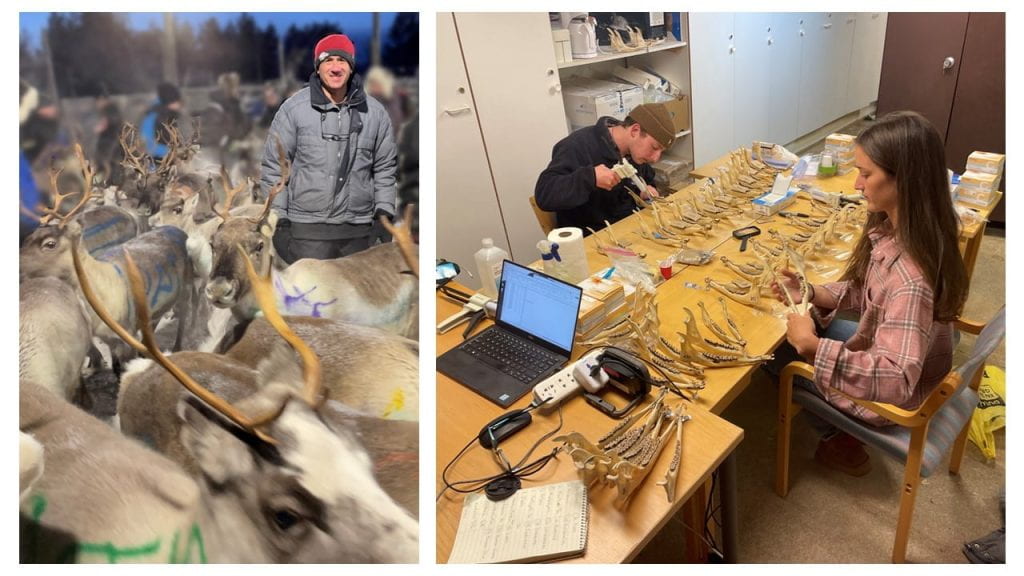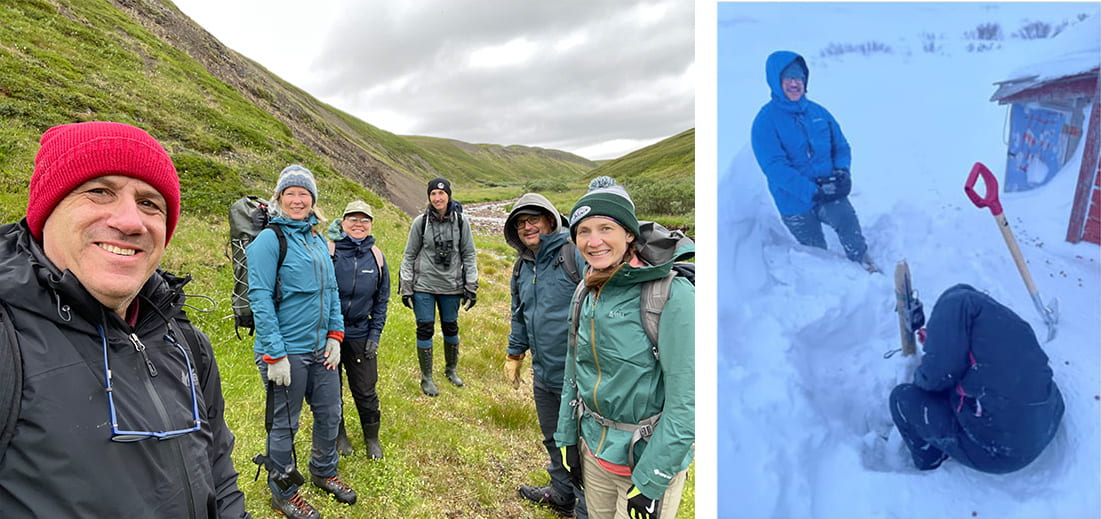Interactions of natural and social systems with climate change, globalization, and infrastructure development in the Arctic
Team Members: Peter Ungar, Valeriy Ivanov, John Ziker, Mary Heskel, Dorothee Ehrich, Desheng Liu, Aleksey Sheshukov, Jingfeng Wang, Olivier Gilg, Matt Sponheimer, Marc Macias Fauria, Gerardo Celis, Karl Mertens, Wenbo Zhou
Funding Source: US National Science Foundation
This project brings together earth system scientists, engineers, ecologists, and anthropologists to document and explain changes in ecosystems and their effects on the plants, animals, indigenous peoples, and the built environment of the Arctic. It emphasizes interactions between these elements to help understand, inform, and plan for changes to come. We focus on the Varanger Peninsula of Finnmark, Norway and northern Lapland, Finland. Varanger has all the elements needed for such a study, low and higher altitude tundra, boreal forest fringe, a rich diversity of plant and animal species, a large population of traditional peoples, and economically critical energy producing infrastructure. Lapland offers an exceptional opportunity to study reindeer herding practices and culture in a boreal forest setting. Local stakeholders will be engaged throughout the project.
This project is important because the Varanger Peninsula serves as a small-scale and manageable model for Arctic ecosystems, wherein changes in climate and their effects on temperature, precipitation, landform, plants, animals, peoples, and infrastructure need to be understood and related to one another. This work contributes to curriculum development for collaborative, transdisciplinary online inter-institutional undergraduate and graduate courses to train the next generation of scientists to take a holistic approach to problem solving.
Dental wear of small herbivores as a proxy for habitat in the Arctic
Team Members: Peter Ungar, Lindsay Saylor, Kaitlyn Puyear, Jacob Purifroy, Olivier Gilg, Alexander Sokolov, Natalya Sokolova, Sophie Montuire, Aurelien Royer, Ivan Fufachev,
Pearson Hafer
Funding Source: University of Arkansas
This project is considering variation in incisor microwear textures and cheek tooth shape/gross wear patterns of lemmings and voles along a north-south gradient in the Yamalo-Nenets Autonomous Okrug, Siberia. The Yamal Peninsula and adjacent Belyi Island represents a series of ecological zones and microhabitats that might be distinguished by wear pattern. We hope to develop a proxy by which we can reconstruct habitat in the past, gauge environmental variation today, and monitor effects of climate change into the future.
Dental wear and breakage of arctic fox teeth as indicators of dietary stress given climate variation and anthropogenic disturbance of habitats
Team Members: Peter Ungar, Blaire Van Valkenburgh, Alexandria Peterson, Aleksandr Sokolov, Natalia Sokolova, Dorothee Ehrich, Ivan Fufachev, Alexandra Terekhina, Alexander Volkovitskiy, and Viktor Shtro, Olivier Gilg, Ester Rut Unnsteinsdóttir, Eli Geffen, John Hopkins, Karsten Phillips.
Funding Source: US National Science Foundation, University of Arkansas
This project considers gross tooth wear and patterns of antemortem fracture of the dentitions of Arctic foxes in Iceland and the Yamal Peninsula of Siberia and microwear of Yamal foxes as proxies for dietary variation associated with varying food availability across time and space. We are developing a new proxy by which we can assess impacts of climate oscillation, habitat, and anthropogenic disturbance on diets of arctic foxes.
Impacts of climate, habitat, and herding practice on diet and dental wear of reindeer in the Arctic

Team Members: Peter Ungar, Bruce Forbes, Mikael Fortelius, Ilpo Kojola, Jouko Kumpula, Kirsi Muuttoranta, Alexandra Terekhina, Alexander Volkovitskiy
Funding Source: Fulbright Foundation, Finland, University of Arkansas Honors College
This project considers gross dental wear and microwear of reindeer living in different habitats, from the boreal forests of Lapland to the tundra of Siberia, We are studying impacts of vegetation and lichen biomass in different herding areas as well as impacts of extreme weather events and supplemental feeding. The idea is to develop a new proxy for assessing dental health, diet, and nutritional stress of Arctic ungulates under different conditions.



